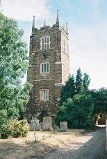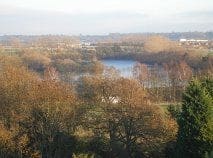
Welcome to St Edmund or St James Church we hope you will find this a useful source of information. We are very proud of our beautiful grade 1 listed building which is open to the public on most days of the year. Please feel free to visit.
We usually record a service each week across our benefice
This is the latest from Blunham:
-
Easter Sunday
We have successfully completed our kitchenette, where you can make yourself tea or coffee when you come to look round the church. The new toilet is next to the kitchenette and has changing facilities provided.
Every Wednesday in term time we hold a community breakfast when we serve bacon baps, croissants and toast. This runs from 8.45 to 10.30am.
On the second Saturday of the month we hold our Community Café when we serve refreshments, including cake. This runs from 10.30 to noon.
We are currently installing a disabled entrance in the north porch.
Work on restoring the tower clock to full working order and repainting the two faces will begin in September.
We have been granted a faculty for urgent repairs to the masonry on some parapets and one clerestory window. This has been costed in the region of £200,000. We are currently applying for grants and have £40,000 from the Parochial Church Council towards this.
The north and south aisle roofs need replacing and we have a figure of £150,00 as a guide. This cannot be done until the masonry repairs are complete.
A faculty has been applied for, for maintenance work on the bells to keep them safe while we raise the money for a full restoration. This will cost in the region of £60,000
The church is registered as heritage at risk.
We have a monthly benefice magazine, The Riversmeet Recorder, which is delivered free to every house in the benefice.
Our weekly Pew News, which is available at services, can be emailed to you – please contact one of the churchwardens if you would like to be added to the mailing list.
A Brief History
The Church Building
The Church building dates from the 14th century with the exception of the tower, which is Norman. Its present appearance, however, dates mainly from 1862 when a major restoration was carried out. There is a new oak floor in the south aisle and kitchenette area, and a modern, coloured-glass window which sits on top of an oak screen with glass doors leading into the vestry.
The Tower
The tower is the oldest part of the Church. The internal and external arches are both Norman, dating perhaps from the 12th century. There are also two Norman windows which are visible only from inside the tower on the ground floor. Apart from these features, the appearance of the tower dates from the 16th century
There are six bells. The earliest was dedicated by the maker to the 6th Earl of Kent and his wife in 1580. Two were cast in Leicester in 1602. The fourth dates from 1609. The fifth was cast in 1740 by Thomas Russell of Wootton. Finally, in 1953, a Coronation Bell was presented by Charles Harding. They are some of the heaviest bells in the county.
The wooden screen and doors to the nave are judged to date from the 16th century and were probably moved here from elsewhere in the Church during the 1862 restoration. Before that time, there was no access from the tower to the nave, the way being blocked by a singing gallery.
The Nave
The pulpit and the pews at the back of the nave appear to be of the same date and style as the tower screen but the other pews date from 1862. High up on the walls are hatchments of the Thornton family whose seat was Park House, Moggerhanger.
The Chancel
The memorial tablets at the east end are also of the Thornton family whose remains are in the mausoleum in the churchyard. In the south-east corner of the chancel is a fine tomb of Susanna Longueville, wife of Sir Michael Longueville and daughter of Charles, 7th Earl of Kent, who died in 1620. Opposite is another tomb, unfortunately long defaced. At present there is no way of identifying the person for whom it was made.
The reredos of carved wood depicting the Last Supper was presented in memory of Sir Salusbury Gillies Payne of Blunham House and his wife Catherine Ann by their children in 1904.
The Vestry
Separating the choirstalls, which date from the 1862 restoration, from the south bay is an exceptionally fine, pierced, perpendicular stone screen, the lower part of which has six and the upper part 10 mullions with trefoil tracery. This part was once used as a vestry but was converted by faculty to a Lady Chapel in 1950. It has now reverted to being a vestry, again by faculty, in 2019. The floor consists of hand-made, clay tiles which sit on top of several tons of recycled glass which is permeable and insulating. A fine, new oak screen leads from the vestry into the south aisle. The glass doors have a striking, clear cross in otherwise clouded glass. Above the screen is a modern coloured-glass window celebrating the church’s connection with John Donne. The window was designed by the glass artist Derek Hunt, installed on 18th September 2019 and blessed by the Bishop of St Albans during the morning service on 22nd September 2019. It was donated in memory of Esme Parrott, a member of the church and choir, and who died in 2011.
Near the south door is a small, but blocked doorway behind which are the remains of stone stairs which may once have led to a room over the south porch.
St George’s Chapel
The east end of the north bay contains the organ which was given to the church in the middle of the nineteenth century by a Miss Polhill, a member of the Howbury Hall family, who lived in The Cottage in the High Street.
The east end of the north aisle forms St George’s Chapel which was established by faculty in 1953 to commemorate parishioners who had died in the two world wars and whose names are inscribed on the reredos.
A more detailed Guide to Blunham Church booklet is available to be purchased – copies can be found in the church.
Church Improvements
Re-Ordering
We have completed the process of putting into place long-awaited improvements to the church facilities: the installation of a kitchenette and disabled toilet in what used to be the vestry.
A new vestry has been created in the old Lady Chapel by installing a new wooden partition in the archway with a stained glass memorial window above. The two windows in the vestry have undergone extensive refurbishment, with the east window being awarded Highly Commended in a national stone restoration competition. Kensington Palace came first.
We congratulate the stonemasons from Hibbitts in Cambridge on their superb work.
When the joists were removed, one was discovered to have been signed by the carpenter in 1862 – the Victorian restoration of the church. This joist in now displayed in a cabinet in the south aisle along with information about the carpenter.
The walls in the vestry have been re-rendered with lime mortar – the previous render was waterproof, which caused a lot of damp. The whole of this area has been painted.
Blunham Church Support Group

Our small group sends cards to those in the village who are ill or in hospital or who have recently been bereaved. Do you know of anyone who would like a card or a visit? If so please contact one of the churchwardens.
Thank you…..All cards and plants are funded from the St. Edmund Fellowship.
Blunham Church Flowers
Would you would like to sponsor an arrangement of flowers in the church for a special occasion – to commemorate an anniversary, a christening, or in memory of a loved one?
Please contact one of the churchwardens
Sponsor a High Altar Candle
Purchase a High Altar Candle in memory of a loved one, which will be lit at the weekly Sunday services. A suggested donation is £2.50 for one candle, or £4.00 a pair.
